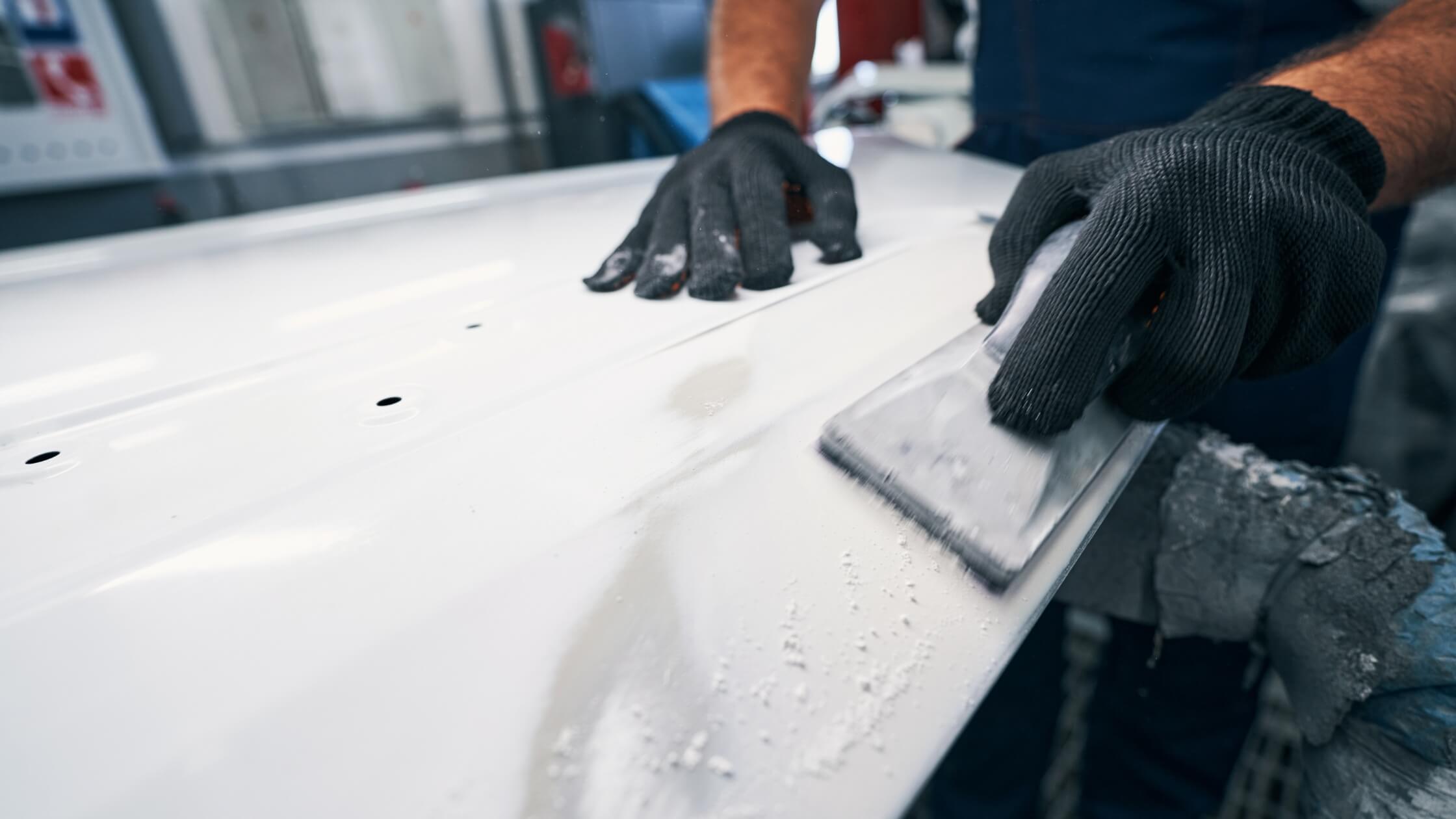Proven Techniques on How to Sand Fairing Compound Smooth
A flawless finish doesn’t happen by accident, it’s the result of careful prep, the right materials, and good sanding technique. For repair shops, OEMs, and even serious DIYers, sanding is the step that separates an average repair from a Class A surface ready for paint or gelcoat.
At Smooth Tech we design compounds like FairTech VE and FairTech EX to make this process easier, but technique is just as important as product choice. Here’s how to get that smooth, professional-grade surface every time.
Choosing the Right Sanding Tools and Grit
Not every sanding job requires the same approach. Using the wrong grit or tool can lead to uneven feathering, wasted effort, or worse, surface damage.
-
Start coarse, finish fine: Begin shaping with 60–80 grit for heavy stock removal, move to 120–180 grit for fairing, and finish with 220–320 grit for Class A smoothness.
-
Use long sanding boards: For panels and hulls, a longboard keeps pressure even and helps avoid waves or low spots.
-
Keep abrasives fresh: Dull paper clogs and scratches instead of cutting cleanly. Replace it often for consistent results.
Best Practices for Achieving Flat, Fair Surfaces
A true Class A finish requires more than just sanding, it’s about controlling pressure and working with the panel, not against it.
-
Crosshatch your strokes. Sand diagonally in overlapping passes to maintain flatness and avoid grooves.
-
Stay consistent. Apply even pressure; pushing too hard creates heat and uneven cuts.
-
Work in stages. Don’t rush to the fine grit, each stage should fully remove the scratches from the last.
Smooth Tech’s FairTech EX is a favorite here, because it sands cleanly without clogging abrasives, making it easier to get through each stage efficiently.
How to Spot and Fix Imperfections Early
Sanding isn’t just about smoothing, it’s also the best time to catch flaws before they show up in the final finish.
-
Guide coat checks- Apply a light mist of contrasting guide coat before sanding to reveal highs, lows, or pinholes.
-
Fill as you go- Address imperfections with a thin skim of FairTech VE before moving on.
-
Check under different lighting: What looks smooth in overhead lighting can reveal waves under angled light, be sure to move your panel around to catch every detail.
Catching imperfections early saves rework and ensures that when paint or gelcoat goes down, the surface is truly flawless.
The Key to Consistent Class A Results
The right filler makes sanding easier, but the real difference is in your process. Combining proper grit progression, consistent technique, and high-quality products ensures every panel, hull, or mold comes out Class A ready. Smooth Tech compounds are built to sand smooth, cure evenly, and give you confidence that your finish will impress, every time.
Upgrade your sanding workflow—Shop Smooth Tech Co.’s full line of fairing compounds today.


Share:
Why Your Fairing Compound Keeps Shrinking and How to Stop It